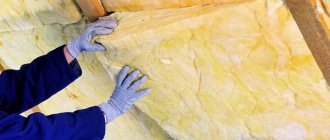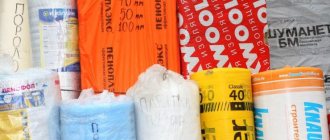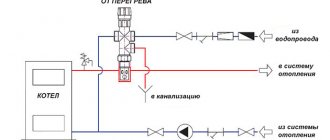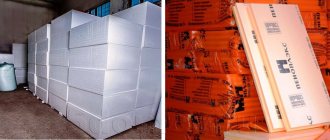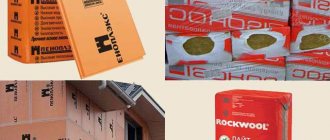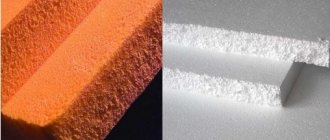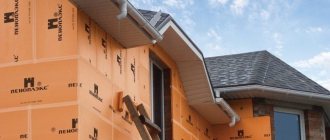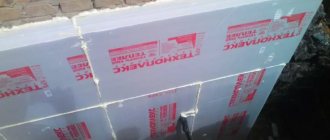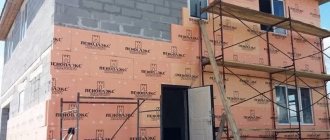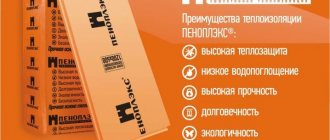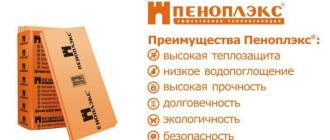Expanded polystyrene has a structure that arouses curiosity among small inhabitants. They taste it on the tooth, but do not put it into the stomach. Rodents have developed front teeth from birth. This makes them uncomfortable to chew food. Mice are constantly looking for material to sharpen their teeth on.
Mice do not eat polystyrene foam because this material has no beneficial or nutritional properties. But they can beautify and insulate the hole. Mice also want to live in comfort. Scientists conducted experiments with hungry mice. They placed water and food next to the foam partition. Hungry small animals destroyed foam structures just to get to food.
Interesting! Zoological experts believe that stress throws mice off balance. By sharpening their teeth, they calm down. Rodents get nervous from constant noise and lack of free space.
Conclusion
Do mice eat penoplex?
Rodentologists (scientists who study various rodents) can explain whether mice chew penoplex. Experts say that any mouse species can easily chew through this insulation if it gets in their way.
Penoplex for a mouse is an obstacle that needs to be removed in order to get to food and water supplies.
And to understand whether mice eat penoplex, you need to understand their eating habits. Rodents feed on organic substances, and penoplex is far from organic.
If the pest does not consider the insulation as an obstacle, then he may well pay attention to it as a cozy home. Penoplex often becomes a place to create their nests.
Some useful facts
In fact, representatives of the mouse order do not feed on insulating building materials at all, since they are inedible. The goal of these small animals is to create a cozy nest for their offspring, and they achieve this in an accessible way - they gnaw holes. To better convey the essence of the problem, we bring to your attention a number of facts obtained as a result of many years of practical observations:
- The rodent invasion begins every year with the onset of cold weather. It is more convenient for a field mouse to get into a human home, where there is warmth and food, than to dig a hole in the ground.
- It does not matter what technology was used to build a private house and what building materials were used during construction. There are always multiple routes used by pests to get inside.
- Mice are able to climb vertical walls. This is how they get onto the roof and settle on the ceiling, where the maximum amount of heat accumulates.
- Rats are very rare guests in residential buildings. They prefer food warehouses, granaries and other similar structures. If they appear in the house, it means that you are located too close to the pigsty and the feed barn, where these dangerous rodents came from.
Reference. It is believed that rats are much smarter than mice and therefore more difficult to breed. But if you comply with all the requirements for the placement of buildings on the site, then most likely you will never encounter rats. True, compliance with the standards must also be required from neighbors who can put a shed next to your house.
Mice and foam
Foam plastic is often used in construction and everyday life. This is a popular foamed synthetic polymer.
For a mouse or any other rodent it has nutritional value. And yet, how mice get along with foam is of interest to many.
Eat or chew
Owners of residential buildings could verify from personal experience whether mice chew foam plastic. And rodentologists also explain whether mice eat foam.
Obviously, the taste characteristics of this building material are unattractive to rodents, but it is still of interest to them. Most often this happens while searching for food and trying to get into living quarters.
Mice also chew polystyrene foam because they have a special teeth structure. After 3 weeks from the moment of birth, the pests have a pair of incisors on both jaws (upper and lower). They continue to grow continuously until the end of the animal's life.
Every 24 hours they add 1 mm. If you leave this to chance, then after a while the mouse will not be able to close its mouth.
This anatomical feature forces them to grind their incisors down on hard objects, including building materials, every day.
For this reason, they often have to chew on things that are not suitable for food. They don’t have to go through much. They can grind cutters on plastic, wooden materials, fabric, concrete.
They can also chew foam for other reasons:
- Being in a stressful state. If the room where the pest lives is too noisy or it constantly has to fight for survival, then it calms its nervous system by gnawing out new tunnels. Or in this way the rodent marks its territory.
- Acquaintance with new objects and materials. Mice prefer to taste everything new and unknown. They will not consume synthetic materials internally, but will adapt them for other purposes.
- Construction of nests for breeding offspring. Rodents like foam plastic just as much as people do. The strengths of this insulation: non-toxic, high level of thermal insulation, easily divided into parts. The mice view it as a mink. They gnaw through numerous tunnels inside the foam and create a cozy nest there. Or they bite off pieces and take them to where they plan to set up their home.
The walls that separate the outside of the building from the inside are insulated with polystyrene foam. To get inside, pests have to do a lot of work.
They chew on everything, but when they come across material that lends itself especially well to this, they give preference to it.
If builders do not think everything through well, then they facilitate the entry of uninvited guests.
How to treat it to prevent chewing
How to protect polystyrene foam from mice needs to be thought out during construction. It is recommended to protect the outer layer with galvanized iron to a height of 30 cm.
Trying to get inside, mice gnaw only the lower part of the building. They lack the ability to climb walls. Another option for protecting polystyrene foam is to use fine chain-link (a metal mesh with small cells).
To prevent mice from eating polystyrene foam and damaging property or thermal insulation, it is recommended to give preference to dense material.
If the fibers have a different arrangement, then it is much more difficult for rodents’ teeth to damage it. Mice often inhabit houses with thin, poor-quality walls. It is important that this point is thought through during construction work.
The ways in which pests enter a living space are always unpredictable. Tracking them can be very difficult. Once inside, the mouse begins to look for a secluded place to nest.
They often prefer the space under the floor, between walls, above the ceiling, provided that everything necessary for their nests is there.
You can protect walls not only from the street, but also indoors. To do this, use a fine mesh or any other dense material. Experts also recommend treating polystyrene foam with denatonium benzoate (Bitrex). This substance is the most bitter substance on earth.
This chemical is not harmful to people or pets. It contains no toxins, but is very bitter. Pests will not be able to chew on material saturated with such bitterness.
Moreover, denatonium benzoate is able to protect walls from other rodents or harmful insects.
Video
Do mice chew foam?
How to protect an insulated house from rodents
It makes no sense to talk about how to get rid of mice using rat poisons and all sorts of mousetraps, especially when they live in the thickness of the outer walls. The best way to preserve the integrity of the thermal insulation structure is to keep the mouse out of the house, although a 100% guarantee cannot be achieved. What is recommended to do:
- Try to build houses from warm structural materials - aerated concrete or wood concrete. If you maintain the required wall thickness, you will not have to insulate them.
- To insulate roof slopes and ceilings, use dense basalt wool or fill the attic with expanded clay.
- To protect polymer and other soft insulation materials, the foundation and base of the house must be enclosed in a fine steel mesh coated with zinc.
- Make a basement ebb in the form of a metal canopy around the perimeter of the building. It will prevent the mouse from climbing up the wall to the roof.
- Install an ultrasonic repeller in the attic.
Such an overhanging canopy is quite difficult for animals to overcome
Also, do not refuse the help of your smaller brothers - domestic cats. For a successful hunt, they need to provide access to closed cavities, the attic and basement, not forgetting to remove all mousetraps. More information about protective equipment is described in the video:
Styrofoam and mice
Polystyrene foam and polystyrene foam are derivatives of the same synthetic substance. Therefore, there is no doubt whether mice chew polystyrene foam. They do this no less willingly than in the case of other insulation materials.
Is extruded polystyrene foam eaten?
If everything is clear with polystyrene foam, then whether mice eat extruded polystyrene foam (EPS) remains to be seen. XPS is a densified foam plastic material. But the extruded material also cannot resist rodents.
Extruded polystyrene foam and mice coexist quite well. Although this insulation is not used by pests as food, rodents live in it, making tunnels for themselves.
Scientific research
At the request of the manufacturers, experiments were carried out in laboratory conditions in which they tried to find out how mice relate to polystyrene foam. Is it of interest to rodents, what pests are capable of if they are not stopped in time.
- They tried to feed the hungry animals with synthetic polyester. They refused to use rodents as food. They turned it into dust, but did not eat it.
- Food supplies were placed behind the sheets of construction material. The mice in the foam made numerous moves trying to get to the food. Then they began to use it as building material for their nest. Mice live in foam plastic without harm to their health.
- We left several sheets of foam plastic at the complete disposal of the rodents. Within a month there were only crumbs left of it.
This suggests a conclusion - if there are rodents in the walls, do nothing about it; at the end of winter, you can start dismantling the old thermal insulation and installing new ones.
Eyewitnesses tell about the appetites and taste preferences of mice, leaving their reviews.
Do mice live in polystyrene foam or polystyrene foam?
According to some studies, polystyrene foam and its derivatives do not have any harmful effects on the health or well-being of mice. Rodents successfully build nests in polystyrene foam and polystyrene foam.
Due to the presence of such materials, the pest population can increase significantly.
But at the same time, there is an alternative opinion that they gnaw through these materials only to pass through barriers, but the animals avoid living in them.
What are people saying?
Last fall (2015) I insulated the utility room with 50 mm polystyrene foam. Everything was great in winter. With the onset of spring, mice came and gnawed the wall (foam). To be honest, the mice themselves don’t really bother me, but I need it to be warm in the winter. The insulation needs to be changed, please tell me what materials rodents do not touch?
I left a roll of insulation in the utility room for the winter. After the season I noticed a nest, I think it was a weasel that spent the winter in a roll. I don’t know about mice, but for rats! Even Soviet glass wool is not a problem to build holes for yourself. We need to add poison. I cover it from above so that the birds do not touch the grains. If necessary, I can add more in winter.
A fact is a fact, and there is no arguing about it. It is clear that measures need to be taken not yet at the construction stage. Attention question: which ones exactly?
Insulation that mice don't chew
To prevent mice from making moves in the walls, it is useful to use the following materials:
- Foam concrete. It is a rigid, but light and porous insulating material. It is not suitable for pests gnawing holes. At the same time, buildings built using such material are warm, durable, and also environmentally friendly.
- Expanded clay. This insulation has proven itself well and has been popular for many years. Its basis is a special type of clay. It consists of granules, the size of which varies from 1 to 40 mm. Expanded clay is used to insulate walls and floors. This material is not suitable for mice or other rodents. It is difficult to move around, you feel a lack of air, and small particles clog the organs of the respiratory system.
- Ecowool. This is a lightweight fibrous building insulation material based on orthoboric acid. It can cause lung damage and dehydration, which leads to the death of mice. This material is not dangerous for humans and pets. It is suitable for insulating both external surfaces and walls inside a living space.
- Foam glass. This material is a foamed carbon mixture of waste glass. During production, glass cells are formed that fit tightly together. This fiberglass has good thermal insulation properties and is not afraid of moisture. In addition, it is convenient to use and is also rodent resistant. When a mouse tries to bite through such insulation, it immediately injures its oral cavity, so it quickly abandons this idea.
If a rodent population begins to develop in the thermal insulation layer, then urgent measures must be taken.
Mice will have no incentive to live in a particular insulation if there is no available food source.
At the same time, heat insulators must be reliable and resistant to pests. The same cannot be said about polystyrene foam, penoplex or extruded polystyrene foam.
Material properties
Penoplex is laid on a concrete screed after waterproofing with polyethylene or roofing felt.
The technical characteristics of penoplex make it attractive for use in the construction of low-rise structures and private and industrial construction:
- the most important thing is the reduced thermal conductivity index, its value of 0.03 W*m*0C can compete with any insulation and will remain a winner;
- increased resistance to transpiration (penetration) of moisture - only 2 cm of penoplex corresponds to roofing felt in terms of vapor permeability;
- Due to extrusion, the mass is homogeneous, so evenly distributed cells significantly increase its strength. Even under very high loads, its parameters are almost unchanged;
- high moisture resistance - liquid is absorbed only in places of cuts where the integrity of the cells is compromised;
- penoplex is not subject to rotting and decomposition, mold does not develop in it, which indicates the high biostability of this material.
Temperature conditions that allow the use of penoplex range from -50 to +75 degrees Celsius, but for each type of penoplex the temperature limits are indicated in the instructions.
You need to know: in order for the dimensions of the penoplex slabs to remain unchanged, the temperature specified in the product data sheet must be observed. If it is overheated, its characteristics may change.
Why cleanliness is important
In most cases, the reason for mice attacking a person’s home is the lack of ideal cleanliness in the house and in the surrounding area. The appearance of small rodents is always logical if the area is littered with garbage, there is food waste in direct access, and the house is in total chaos. Mice are practically omnivores and will feel comfortable feeding on scraps and food supplies. They will most likely switch to polystyrene foam if they realize that they can make cozy, warm nests in it, or if this material interferes with their ability to obtain food and water.
As you can see, maintaining cleanliness in the garden and in the house itself is very important. It’s not for nothing that people say that a clean owner will not have mice.
There is a deal of truth in it. Immediately remove leftover food out of reach, carefully clear the table of crumbs and pieces of food. Take care to completely block the path for mice to places where cereals are stored. The trash can must be equipped with a lid that fits tightly to the bucket, and the container itself must be cleared of debris every day.
At the same time, many people forget about the attic space, because it is there that we often put unnecessary things, we take rubbish there, which is a pity to throw away. Herbs are often laid out in the attic for drying, and some food products are stored. Remember that the attic is not designed for such storage. It should be empty and clean. If you carefully maintain order, then even if mice appear, they will be easy to deal with using a mousetrap, since most likely their number will be small.
If you notice a rodent for the first time in a house where there were no mice before, you need to take adequate measures as soon as possible. Mice, as a rule, do not walk alone, but move in groups, so it is likely that if you see one mouse, then there are several more in the house. But in favorable conditions they can breed very quickly, and then it will be very difficult to get rid of pests, and then deal with the damage caused.
Another unpleasant moment is that mice like to make food warehouses in their nests. They cannot eat everything, so some of the food will rot and emit an unpleasant odor. In addition, there may be corpses of dead individuals in the passages. This can make it unbearable to stay in your own home and lead to the need to completely replace the insulation layer.
What about the usual insulation materials?
1. Penoizol is the same polystyrene foam, only sprayed in liquid form onto walls and floors using a special compressor. Many articles indicate that mice do not chew this material because of its components, but, unfortunately, this is not true. Rodents do an excellent job of working on this material. Perhaps they will not make passages and nests in it, but they gnaw at it with great pleasure.
Penoizol will not be a barrier for mice
The same can be said about extruded polystyrene foam - it is quite dense, and therefore mice or rats will not live in it, but they will not refuse to chew it.
Ordinary polystyrene foam will become not only a simulator for teeth, but also an excellent place for making nests and passages. Rodents pass through it freely, find cracks in the wall and enter the house.
Video: mice and polystyrene foam
2
All types of mineral wool are also tough on mice and rats, and it doesn’t matter whether it’s glass wool or stone wool. Any of them is suitable for rodents to live in.
The mice have already done a good job on this insulating layer of mineral wool.
They do not eat this material, but they skillfully crush it, setting up their houses, and if they have taken a fancy to the insulating layer of a certain house, it will be very difficult to remove them. The trouble is that you can’t lay out poison for them, otherwise the rodent can say goodbye to life right in the nest and then it will be very difficult to get rid of the putrid smell. Therefore, it is not recommended to insulate the lower part of the house with these materials.
In order for the house to be protected from rodents, its basement and basement rooms must be insulated with hard or bulk materials, and the joint between the wall and the concrete slab must be very carefully sealed
It is extremely important that no cracks or cracks form in this place - even the smallest of them will become a good loophole for gray sneaks. And one more thing - in order for a private house to be protected from mice, it is necessary to get a good active cat that will intercept rodents on the way to the house
But when choosing insulation, you still need to follow the advice given above, which is based on the performance characteristics of the materials and the experience of numerous owners of private houses.
Chemical activity
Of particular note is its low chemical activity. This is another positive side of the material, since it is not influenced by many compounds:
- alcohol-based paints;
- different types of acids;
- salt solutions;
- chlorine;
- various oils and paraffins;
- cement mortars.
But there are also substances, although there are not many of them, that, when interacting with penoplex, can cause it to change shape and even dissolve.
When insulating the adhesive for work, it is important to choose the one indicated in the instructions
This is important: when choosing a solvent for painting, you should carefully study the instructions in order to avoid deformation and shrinkage of the material
Foam glass
Foam glass is produced from crushed waste from the glass industry, which is mixed with a foaming agent. Limestone, anthracite, and coke are usually used as foaming agents. The resulting mass is poured into molds and placed in an oven at temperatures up to 1000 degrees.
Foam glass is produced in the form of slabs. The material is absolutely resistant to moisture, has high strength, and is invulnerable to temperature changes. Another advantage of foam glass is that it is an environmentally friendly material that does not emit anything harmful to health. When installing foam glass insulation, the fastening solution must be of good quality, and the seams between the plates must be sealed. This is what prevents mice from entering the room.
